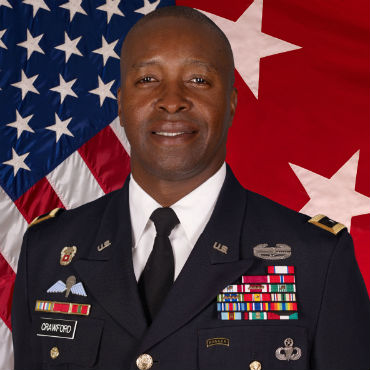Army streamlines adapt-and-buy approach

Army CIO Lt. Gen. Bruce Crawford said the formation has to shed the "thinking of old" and think outside of the procurement process if it wants to be cyber-battle ready.

Acquisition reform isn't a new concept, but it's one that Army CIO Lt. Gen. Bruce Crawford said can't be put off any longer.
"It's not just the idea of knowing [what we plan to do] but what actions are we collectively going to take," Crawford said during a keynote address at the Armed Forces Communications and Electronics Association's MILCOM conference in Baltimore Tuesday.
"We've been treating symptoms … [but] we now know more about root cause and the impact of IT on the character of future warfare" through a recent yearlong assessment from industry partners, operational commanders and academicians.
The remedy, Crawford said, is for the Army to buy off-the-shelf technology when it's needed rather than trying to predict the exact kind of device that it may need in the future -- especially since it might not yet exist.
"The Army's current technical network will not meet the requirements of operational commanders," he said, which includes the entire tactical framework. "Our network is too complex, in terms of what we found; it's too fragile -- and this is the entire ecosystem -- and insufficiently mobile," adding that the network is subject to jamming.
Crawford said the Army needed to emulate innovation and technology developed and used by other services, Defense Department agencies and industry and "operate outside the procurement process."
"This idea of not taking action is not an option that the United States Army actually has," he said. "Absent institutional change, our communications will become what I'd call an Achilles' heel to the tactical instead of being a critical enabler."
Crawford's two-part plan is to halt programs that "don't remedy operational shortfalls" -- improving survivability and mobility of command posts, making the transport layer more resilient, conducting a universal sweep of mission command systems and increasing interoperability between air and ground integration -- and then implementing a new acquisition strategy called "adapt and buy."
"The adapt-and-buy concept is something we've been constructing for the about past 90 days," Crawford told FCW following the speech, admitting that it was similar to the buy, try, decide approach but lent more agility to the procurement process.
"We just formed the cross-functional teams. A big part of this adapt-and-buy construct is going to be the integration with and being informed by the output of the cross-functional teams" that will operated under the new modernization command that Acting Army Secretary Ryan D. McCarthy announced earlier this month during the Association of the United State Army Annual Meeting.
"We looked at multiple ways of doing this, and we keep coming back to the most agile model more akin to the model that puts the user into the loop," Crawford said. "We really don't have an ability to see how the user interfaces with a kit" but with adapt and buy, the Army will have more of a software development component as well as an integration of the output as cross-functional teams develop requirements. Doing this will allow the Army to field test technology on a small scale and determine whether it's worth buying before committing to long-term contracts.
Crawford took heat from Congress during a September hearing as he requested the reallocation of funds away from the Army's legacy Warfighter Information Network-Tactical Increment 2 battlefield communications network. The House Armed Services Committee was frustrated by the Army seemingly changing its mind on investing in the technology after getting congressional approval. But that's the pattern Crawford hopes to break with adapt and buy.
"One of the problems that we've got -- it's not the problem but it's a problem -- you develop a piece of technology, we don't have the resourcing flexibility to buy it."
That means the Army is forced to buy a technology available today it thinks it will need in 2025, when what it truly needs hasn't been developed yet.
"[Say] you came up with something new that I really need on the battlefield based on a threat, I have no ability to integrate that into my platform. So whether it's buy, try, decide or adapt and buy, this allows us to test technology, put it in a demonstrative, experimental environment .… Maybe I want to give it to this unit that's going to this particular place and get feedback, and then I iterate the whole Army."
There isn't a set deadline for when the new plan will officially roll out because it rests on cross-functional teams that are still being assembled. Crawford said the new approach will be rolled out in stages and is expected to be operational along with the cross-functional teams by summer 2018 per Mattis' directive. However, it's possible that they could be stood up before the deadline.
"It's not one monolithic thing, it's enabled by this idea of cross-functional teams informing the requirements so that we can buy," he said. "You can't have one without the other."
Correction: This article was updated Oct. 25 to reflect that Acting Army Secretary Ryan D. McCarthy and not Defense Secretary Jim Mattis announced the formation of cross-functional teams for the service.
NEXT STORY: Fed 100 nominations are now open






